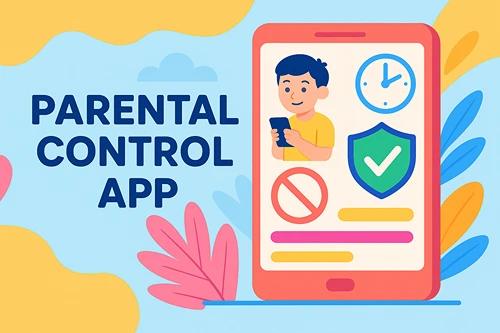Tech Trends That Will Make the Internet a Safe Place
Not too long ago, children were born into this world and going on the internet as a preschooler was the last thing on any parent’s mind as a fun thing for their kids to do. If they did, it certainly was not from the palm of their hand on a smartphone or tablet, much less a gaming device connected to friends online.
Children nowadays access the internet daily for school or pastime starting from a very young age. And since they might be too young to understand potential threats and consequences of their actions, parents, educators, and online service providers are obligated to step in and promote safe internet for children.
If you’re a parent, you already know that keeping children safe in the ‘Internet of Things’ era is an uphill task. However, technological advancement doesn’t only mean more risks or dangers for children online or in an educational setting at school.
Here are some technological trends that are making the internet a safer place for children.
Internet of Things
The Internet of Things or IoT, in short, enables a seamless connection between multiple devices. In a broader sense, everyday devices contain sensors and stream data to and from the internet.
Ironically, many IoT devices like baby monitors and smart toys have gone from a way to protect children to devices that could put them at significant risk.
Regulatory bodies are continuously making efforts to impose safety standards on manufacturers of such devices and toys. These regulations call for stronger protocols and encryption and more options available in parental controls so that parents can filter out questionable content and the amount or nature of data being collected.
Using apps that sync across devices, parents can access and control many of these devices from a distance. This is greatly beneficial for monitoring which data is being exchanged, through which channels, and ensuring that sensitive data doesn’t fall into the wrong hands (or ears). It makes it easy for parents and educators to keep an eye on children’s activities both online and offline.
User and Entity Behavior Analytics
Online parenting forums are awash with hacking incidents where passwords and usernames fall into the wrong hands. Once a hacker gains access to your account or device, they can waltz in and do as they please.
Unfortunately, not all breaches are detected fast enough to prevent damage or data leaks. This is especially problematic if personal data of children are involved.
In the future, such incidents should create less worry for parents, though.
One of the latest advancements in cybersecurity is User Behavior Analytics (UBA). The technology uses data analytics to identify anomalous user behavior and alerts administrators about suspicious activities.
UBA uses machine learning technologies to “learn” about a user’s normal and regular activity pattern. It can then differentiate between a legitimate user’s activity and an attacker who has gained entry by compromising log-in credentials if these activities don’t fit the norm of the legitimate user.
While UBA is still only in the realm of large organizations, its ability to quickly detect and respond to unusual activities in places that children frequently visit makes it a viable solution for minimizing future data breaches and leaks.
Multifactor Authentication
Many applications, websites, and devices use Multifactor Authentication or MFA in short, to improve account security and protect against identity theft. Technically, MFA refers to any system where a user must use at least two authentication forms to access a device, an application, or a website.
If your children use devices or applications, you’ll find MFA handy. Immediately after you log into a device with your username and password, the account server will prompt you to provide a second and independent authentication form.
It’s more or less what happens when bank security asks to see your social security card even though your funds are already secure.
MFA’s concept is that it’s difficult to pretend you’re someone you’re not when you have to prove who you are in different ways repeatedly.
If you’re monitoring how often your child uses a device, MFA will make it hard for your child to use the device even after getting their hands on the device without your approval. Most importantly, it will help keep out those that shouldn’t have access to it in the first place.
AI and ML
AI, along with IoT and other emerging technologies like ML, are continuing to change how we use the internet. Nearly all modern devices that enter the market are IoT enabled. This includes not only smartphones but also TVs and gaming consoles, as well as almost all Virtual Reality gaming setups.
Together, these technologies are shaping a safer internet environment for children. Artificial Intelligence and Machine Learning come complete with advanced language processing abilities. That means that unsafe content can easily be filtered out.
As an example, such technology enables fast image processing that analyses the content of the image and then interferes before a child can see it.
Recently, Instagram updated its filters to remove comments intended to upset or harass its users automatically. The new filter hides negative comments about a person’s character, appearance, and any other content that poses a threat to a user’s physical health and well-being.
Wrap Up
The internet is an exciting place, but is it really safe? Can you, as a parent, allow your children to use it unsupervised? The answer is probably a resounding no. There are apps available to monitor internet activity in your home and on your child’s phone.
Online safety is a continuous battle that never ends. Malicious attacks, inappropriate content, and data theft methods continue to evolve along with the technologies intended to prevent them.
So what can a busy parent do? The answer lies in taking advantage of tech trends designed to prevent malicious content from showing up in searches. Teachers can also incorporate the use of social media in the classroom while teaching internet safety.
Using safe environments such as Safe Search for Kids, YouTube Kids, and implementing all available mechanisms to filter out inappropriate content on devices is a start. Tech progress and trends like some of these mentioned here will contribute to making the internet a safer place for kids.
About the author:
 Ashley Wilson is a digital nomad and writer for hire, specialized in business and tech topics. In her self-care time, she practices yoga via Youtube. She has been known to reference movies in casual conversation and enjoys trying out new food. You can get in touch with Ashley via Twitter.
Ashley Wilson is a digital nomad and writer for hire, specialized in business and tech topics. In her self-care time, she practices yoga via Youtube. She has been known to reference movies in casual conversation and enjoys trying out new food. You can get in touch with Ashley via Twitter.





 Ashley Wilson is a digital nomad and writer for hire, specialized in business and tech topics. In her self-care time, she practices yoga via YouTube. She has been known to reference movies in casual conversation and enjoys trying out new food. Contact
Ashley Wilson is a digital nomad and writer for hire, specialized in business and tech topics. In her self-care time, she practices yoga via YouTube. She has been known to reference movies in casual conversation and enjoys trying out new food. Contact 


